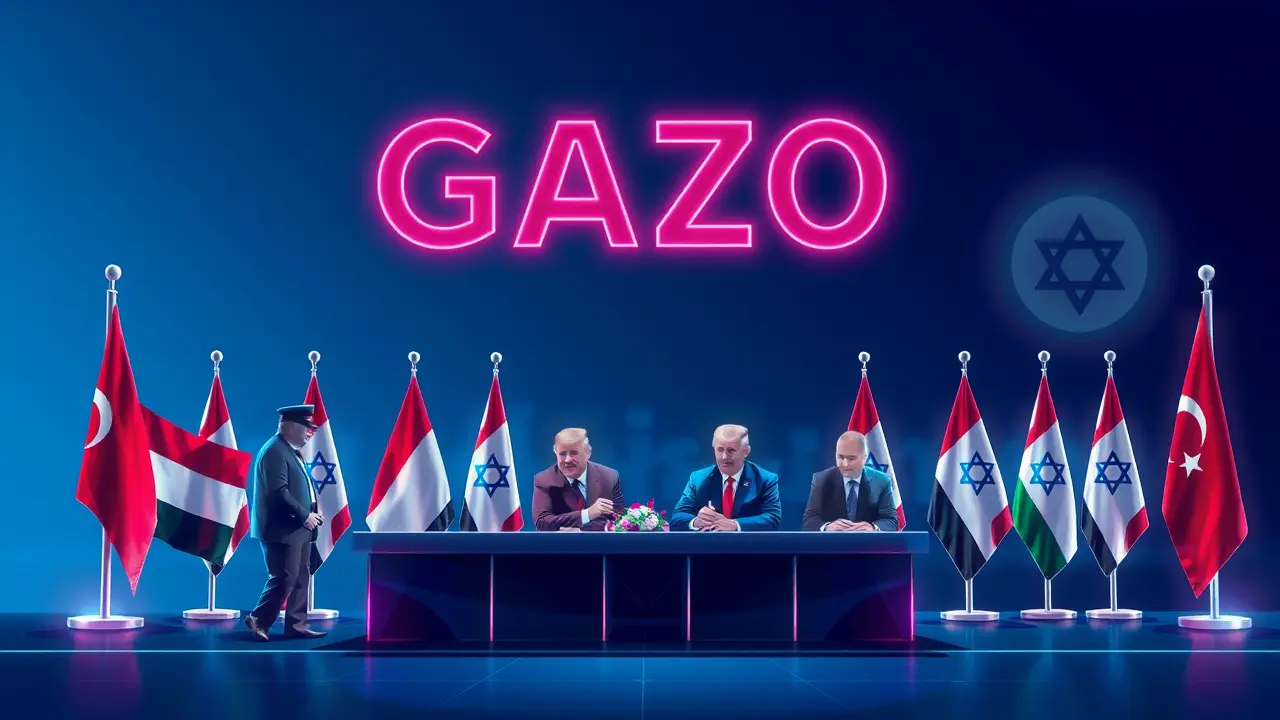Trump Hails Middle East Breakthrough with Gaza Ceasefire Deal
In a geopolitical maneuver that sent shockwaves through the international community, the announcement of a Gaza ceasefire deal, hailed by former US President Donald Trump as a 'tremendous day for the Middle East,' represents not a spontaneous peace but a calculated de-escalation fraught with latent risks and strategic gambits. The declaration, signed by Trump alongside the leaders of Egypt, Qatar, and Turkey as guarantors, materialized in the immediate aftermath of a tense hostage and prisoner exchange between Israel and Hamas, a choreography suggesting a meticulously negotiated sequence rather than a simple cessation of hostilities.To analyze this development through the lens of political risk, one must look beyond the ceremonial handshakes and parse the underlying power dynamics: the involvement of Qatar and Turkey, both of whom maintain open channels with Hamas, signals a potential realignment of diplomatic influence in the region, subtly challenging the traditional US-Saudi-Israeli axis and introducing a new, multipolar layer to conflict mediation. This scenario echoes historical precedents where third-party guarantors have been essential yet have also created dependencies and leverage points that can be exploited later, much like the role Egypt played after the 1973 Yom Kippur War, which cemented its realignment with the West but also embedded it as a perpetual intermediary.The lightning nature of Trump's visit—parliamentary address in Israel lauding Prime Minister Benjamin Netanyahu followed by a swift summit in Egypt—was a masterclass in high-stakes political theater, designed to project an image of decisive American leadership, yet the very speed of the operation raises critical questions about the durability of the terms and the depth of the commitments made. Expert commentary from regional analysts would likely point to the immense challenge of translating a fragile truce, brokered under extreme duress and the immediate pressure of humanitarian crises, into a lasting political solution for the core issues of blockade, reconstruction, and the political status of Gaza.The primary risk scenario, therefore, is not immediate collapse but a slow unraveling, where minor violations or disputes over the interpretation of the agreement could rapidly escalate, pulling the guarantor nations into a cycle of crisis management and potentially drawing in other regional actors like Iran, which views such US-brokered deals with profound suspicion. Conversely, the opportunity scenario, while narrow, posits that this framework could provide the necessary breathing space for more substantive, albeit behind-the-scenes, negotiations between the Palestinian Authority and Israel, potentially leveraging the fatigue of all parties after prolonged conflict.The long-term consequences hinge critically on whether this agreement is treated as an endpoint or a precarious starting point; if it becomes merely a temporary pause to re-arm and re-position, as has happened in previous cycles of violence, then the risk of a future, more devastating confrontation increases exponentially. However, if the guarantors, particularly the US, utilize this window to address the underlying drivers of the conflict with sustained diplomatic pressure and tangible incentives, the deal could mark a genuine, though tentative, pivot toward stability.The inherent volatility of the situation cannot be overstated; the political fortunes of the leaders involved, from Trump to Netanyahu, are deeply intertwined with the perceived success or failure of this initiative, creating a high-stakes environment where domestic political calculations could abruptly override international commitments. In essence, the Gaza ceasefire is not merely a news event but a complex risk matrix where short-term calm is purchased at the price of significant long-term geopolitical exposure and uncertainty.
LE
Lena Schmidt123k2 days ago
tbh we see this pattern everywhere, a quick deal for the cameras but then the real work never happens smh
0
